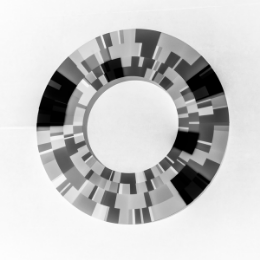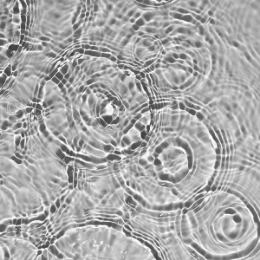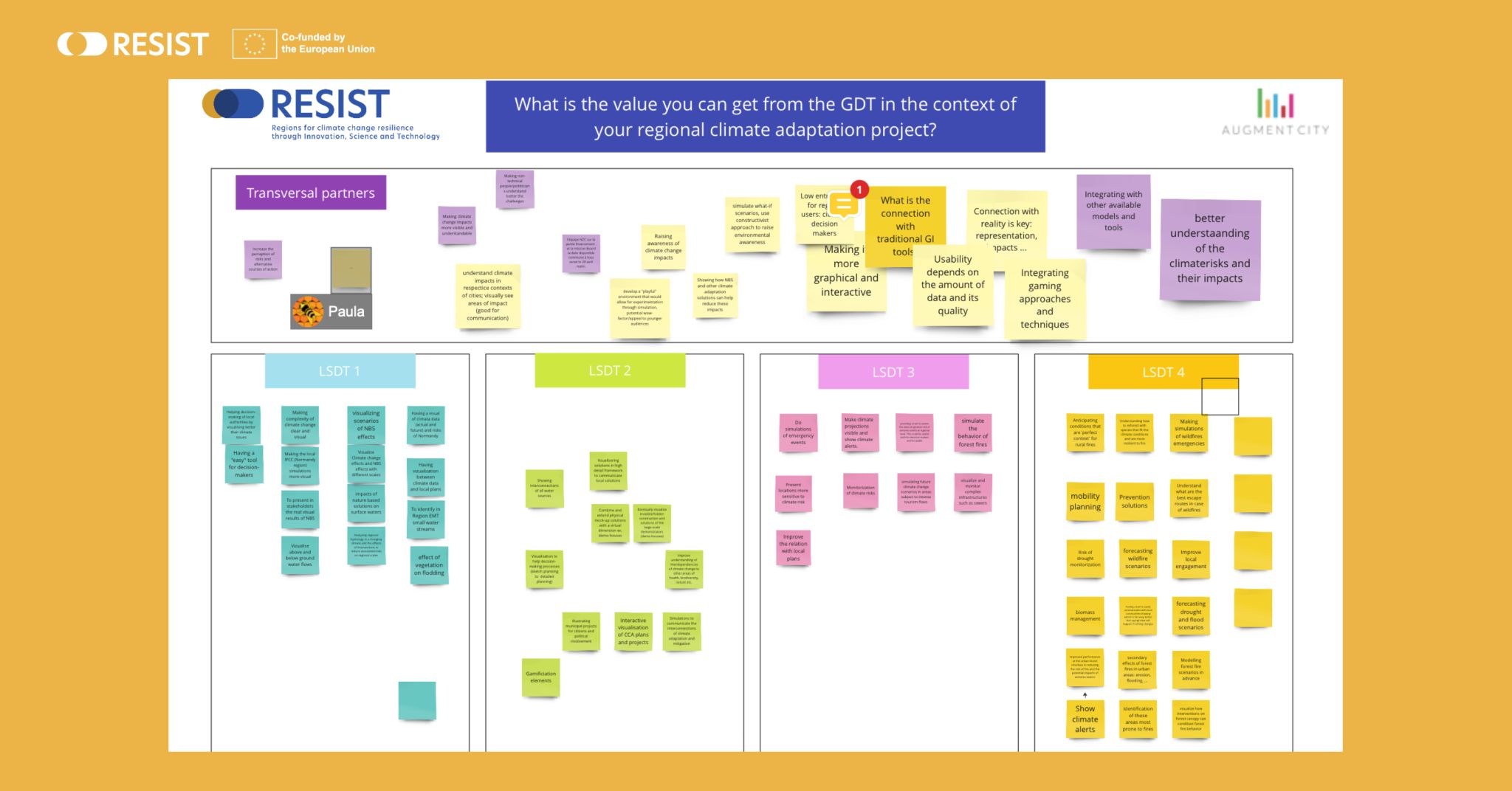AugmentCity, a technology company and RESIST Project partner specializing in digital twin solutions, hosted the first RESIST Project workshop on digital twins on 31 March 2023. The online event, which was attended by 78 participants, was presented by Joel Mills and Celine Crevisier, experts in the field.
The interactive workshop focused on how digital twins can be leveraged for climate resilience efforts. Participants had the opportunity to engage with the speakers and each other through discussions and hands-on exercises. In an interactive exercise on the platform Miro, RESIST Project partners were divided into groups based on the leading regions in the RESIST Project to engage in two breakout sessions in which they had to work together to find answers and solutions to given questions.
Project partners deliberated and shared their insights on the value of Graphical Digital Twins (GDT) in regional climate adaptation projects. GDT are an advanced technology that enables the creation of virtual environments using real-time data. By harnessing GDT technologies, the RESIST Project gains the ability to conduct multiple simulations and accurately predict the impact of proposed solutions simultaneously.
The added value of GDT for regional climate adaptation projects
During the session, a group of participants discussed the obtainable value from GDT in the context of regional climate adaptation projects. The group of partners representing the leading region of Southwest Finland and its twinned regions Eastern Macedonia and Thrace and Normandy emphasized the importance of visualizing climate issues to aid decision-making for local authorities. They also highlighted the need for an accessible tool that can make the complexity of climate change clear and visual, enhancing the understanding of stakeholders and presenting the visual results of nature-based solutions (NBS).
The partners from the leading region of Central Denmark and its twins Blekinge and Zemgale discussed the power of GDT in visualizing changes over time, enabling them to communicate local solutions in a high-detail framework. They expressed the significance of interactive visualizations in facilitating decision-making processes and visualizing Climate Change Adaptation (CCA) plans and projects effectively.
The partners working in Catalonia, Puglia and Baixo Alentejo focused on the visibility of climate projections and climate alerts through GDT. They highlighted the value of a tool that can assess areas at the greatest risk of extreme events at a regional level. Additionally, they recognized the importance of simulating the behaviour of forest fires for better preparedness and response strategies.
The partners from the group led by Central Portugal and joined by Extremadura and Vesteralen contributed by discussing the anticipation of conditions that are conducive to rural fires. They emphasized the need to understand how to reforest with species that are more resilient to fire and that suit the existing climate conditions. LSD4 partners also highlighted the importance of forecasting drought and flood scenarios as well as identifying optimal escape routes in the case of wildfires.
What type of findings would you like to extract through GDT?
In Breakout Room 2, project partners explored the desired findings that they hope to achieve through the application of GDT. The group of regions led by Southwest Finland expressed their interest in visualizing the transformation of developed regions when incorporating optimal solutions for water quality and hydrological cycles. They also underscored the importance of estimating the total resources required for implementing environmentally optimal solutions in developed areas. Additionally, they aimed to identify heatwave hotspots and visualize the effects of NBS or other CCA solutions on these areas.
The partners from Central Denmark, Blekinge and Zemgale focused on understanding cause-effect scenarios before implementation to improve resource planning. They also aimed to enhance capacity-building and comprehension of challenges and consequences at political levels. LSD2 partners expressed the need to implement effective digital twin toolchains and overcome barriers in data sharing. They also emphasized the importance of breaking silos to leverage financing opportunities that incorporate multiple values.
The partners representing Catalonia, Puglia and Baixo Alentejo shared their interest in tracking the evolution of risk in specific sensitive areas through GDT. They aimed to estimate the resources needed to effectively address climate events and improve preparedness. LSD3 partners also underlined the importance of informing isolated populations during extreme events and making knowledge of public service functioning more open to citizens.
Lastly, the group of regions led by Central Portugal discussed their focus on preventing floods and fires through the insights provided by GDT. They aimed to identify optimal locations for firebreak areas and monitor key areas during the summer season. LSD4 partners recognized the potential of GDT in improving decision-making processes and facilitating more informed choices.
The collaborative breakout sessions among RESIST Project partners highlighted the diverse perspectives and valuable insights regarding the value and desired findings of GDT in regional climate adaptation projects. These contributions demonstrate the commitment and collective efforts of the project partners towards advancing climate resilience.












